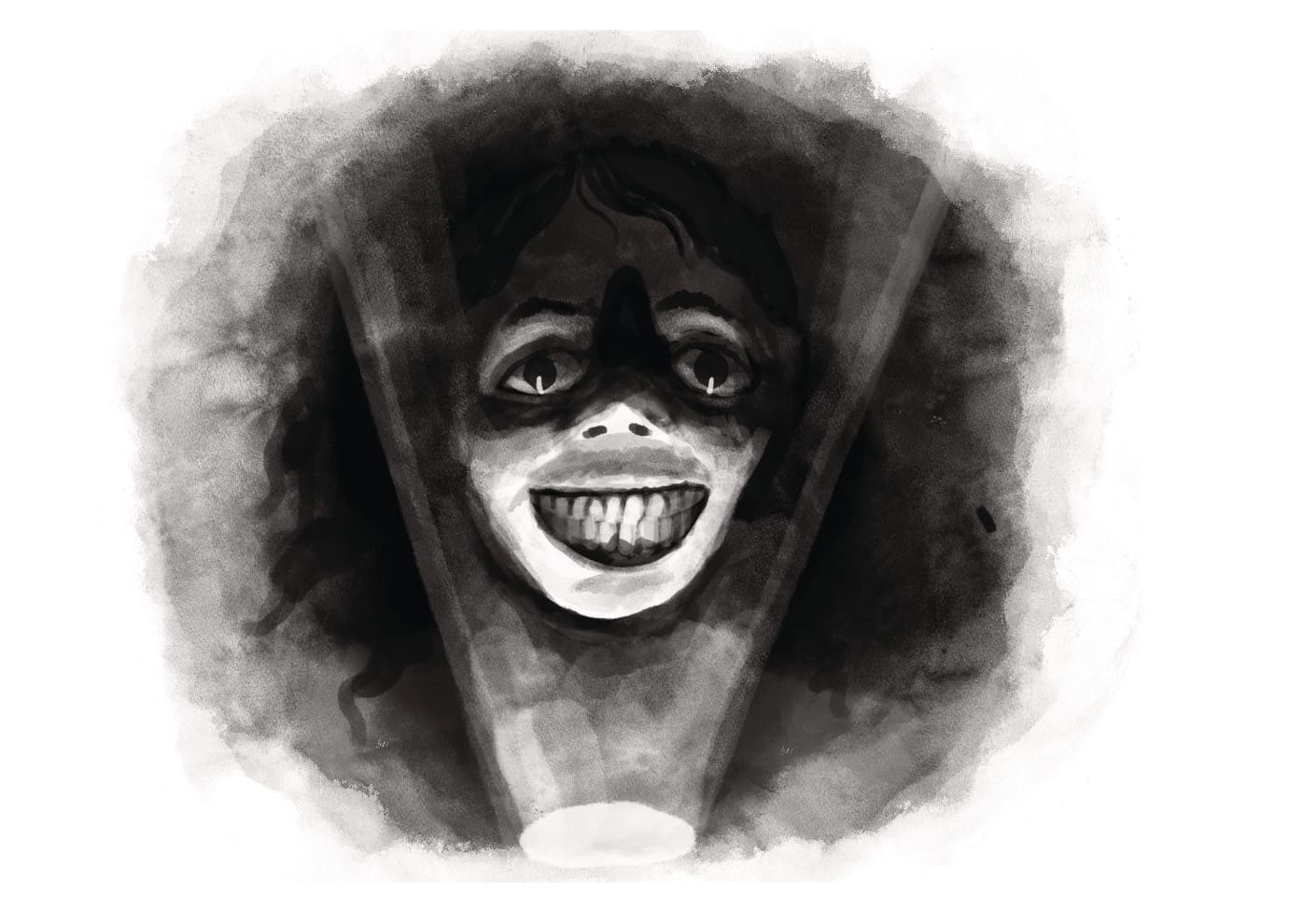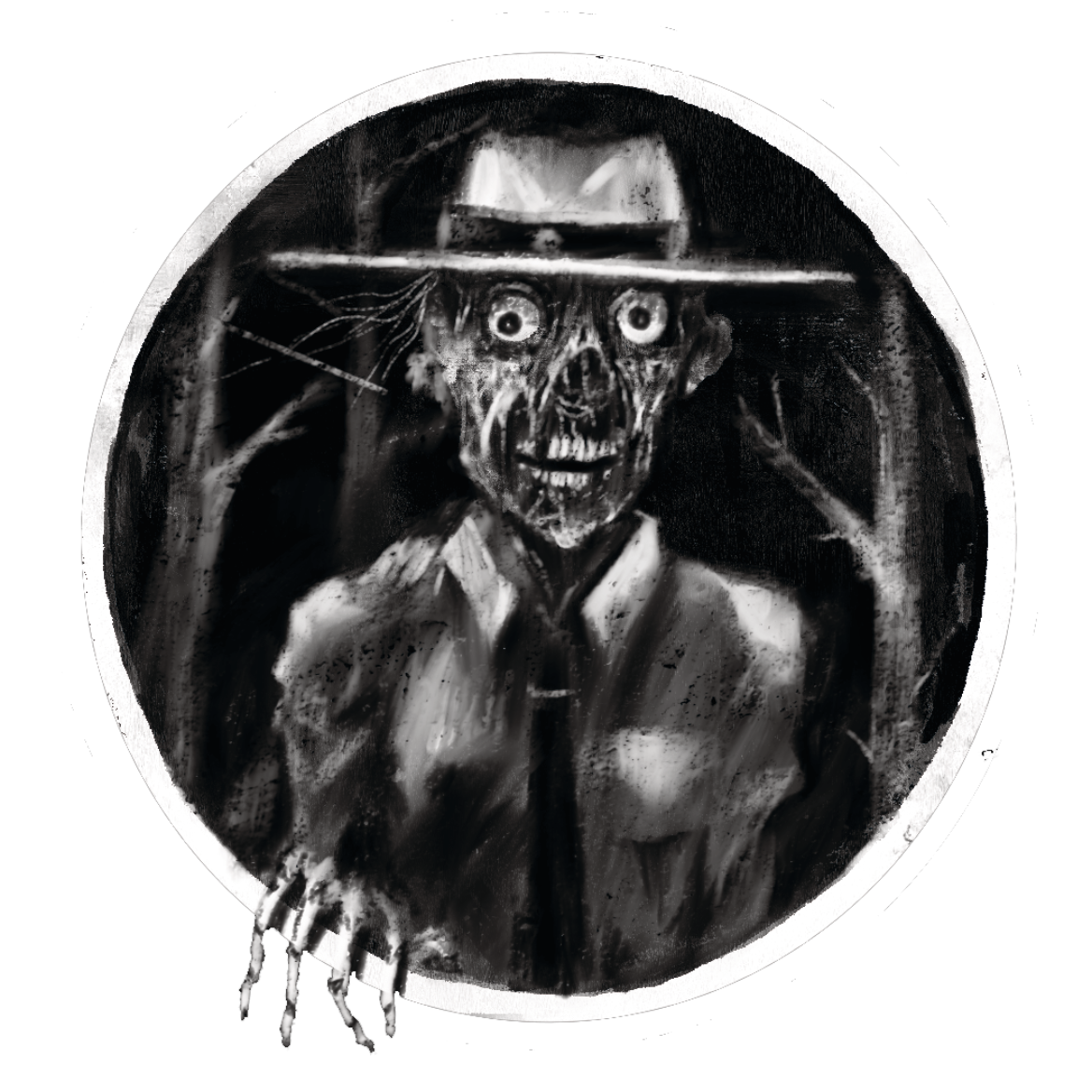
The ‘90s Nickelodeon horror anthology television show Are You Afraid of the Dark? featured a group of kids called the Midnight Society who would gather around a campfire each week to submit scary stories for their peer’s approval . Whilst their tales would be the focus of each episode the show would periodically return to the campfire to see how that particular story was being received.
That frame device is also key to Campfire, a storytelling game designed by Adam Vass and Will Jobst that also draws inspiration from other horror anthologies such as George A. Romero and Stephen King 1982 film Creepshow and R. L. Stine’s Goosebumps series.
‘By framing it as Creepshow or Are You Afraid of the Dark? we’re reaching out to an audience we think would really love and appreciate this style of game but maybe haven’t been made aware of it because so much of roleplaying culture is wrapped around fantasy stuff,’ Vass said. ‘They might not want to engage with roleplaying because of what their perception of it is. This is an invitation saying “this is not as far off from what you like as you might think.” We always want to encourage different kinds of people to come to the table and see what it’s like.’
Vass and Jobst’s goal then was to make their take on the horror anthology, Campfire, as accessible as possible to new players. The game doesn’t require any advanced preparation and a session is designed to last 90 minutes to two hours.
‘This won’t take you all weekend,’ Vass explains. ‘You don’t have to learn calculus. You just get to tell scary stories.’
Designed for two to five players, Campfire centers around a set of eight 15-card story decks that each represent a different sub-genre of horror. Jobst and Vass each wrote one deck and the rest were penned by other tabletop horror writers such as Dread creator Epidiah Ravachol and Bakto’s Terrifying Cuisine writer Giuliano Roverto.
‘We made a dream team list, and luckily we got pretty much everyone that we’d hoped for to say yes,’ Vass said. ‘We let each of them do their thing. There was very little oversight in terms of what they were allowed to do or what they wanted to write about so we ended up with this really eclectic mix of different sub-genres of horror and everyone getting to fully lean into their favorite weird, scary stuff.’
Each deck has its title card with both evocative art and text explaining the basic plot, inspirations, content warnings and text to read out loud to start things off. For instance, in the case of Banana Chan’s Flutter, the texts sets the scene as a glamping trip gone wrong, that it touches on films like Midsommar and The Ritual and that it involves both death cults and body horror.
‘A big thing for us was making it feel like stepping into a movie theater where you don’t quite know what you want to watch but you want to watch something,’ Jobst said. ‘You have all these story cards with basically their movie poster back on the table face up. It’s meant for you to just pick up and play.’
Players are encouraged to use safety tools to ensure everyone remains comfortable with the horror level. The X-Card, for example, can be pointed to anytime a player isn’t comfortable with how the game is going and wants to change scenes. They can also draw lines ahead of time, subjects that they don’t want broached at all, or veils, those topics that can be implied but not directly addressed.
Players then get to choose and customize their embers — people, places and things that are suggested for each story which can be anything from a contraband switchblade to a college campus. Instead of controlling individual characters, players will affect the fates of these embers.
‘Not having a personal character lets you make bad things happen to them with less emotional friction,’ Jobst explained.

Players then take turns acting as the narrator, flipping a card from the deck to read aloud and then building up a scene based on the prompts on the card, the embers, in play and the story that has been developed so far.
Each player also receives a set number of coins which they can use to impact the story. The narrator can auction a coin, asking for suggestions and then rewarding their favorite pick. Players can also pay coins to add challenges or to give a request to the narrator. They can place a coin on an ember to effectively take control of it for when they have a good idea, or take a coin off an ember to shift the focus somewhere else.
‘I think the coin system does a good job of keeping people engaged, Vass said. ‘If you don’t have coins in your hand, you want them. If you do have coins in your hand, they’re a physical reminder that you have power and you have the ability to change circumstances. Whether you have that power or you want that power, it’s keeping you attuned to the game. It’s making you actively listen and keeping your brain turning looking for that next thing that’s going to shock or scare people.’
Vass and Jobst also explain that the coins help establish a shared responsibility over the story. Part of the goal was to eliminate the complications that can be found in other TTRPGs without game masters where people can hesitate to participate for fear of stepping on someone else’s toes or one player might take too much control of the narrative.
‘Will and I really like playing GMless or shared GM games together, it gives everyone the opportunity to push and pull and you end up with that completely unexpected result at the end that everyone contributed to,’ Vass said.
‘Our goal with Campfire specifically was to mechanise that, to allow other players that sense of satisfaction at the end when you have some awful horror reveal that no one necessarily planted but everyone fostered together. That feels like a group hug. We all did this. Not any one of us could have done this on our own.’
In play three campfire cards are shuffled into the deck and when they’re drawn players step out of the story and monitor the state of the fire like the members of Nickleodeon’s Midnight Society. When it’s blazing, they add kindling to the embers in the form of complications. When it reaches an inferno, they start making predictions for how the story will end.
‘Those breaks in the structure of play allow you as players to zoom out and say “I really like what’s going on with this character” or “I wish we would bring in this element a little more,”’ Vass said.
‘It allows for this meta-play that’s normally absent in storytelling games. We are the writers, the audience and the actors. It’s offering moments for you to purely be in the audience and say “yes, this rips,” or “this is really scary.”’
The last card is the ashes, where the players share an epilogue after voting on whether the outcome is better than expected or worse than they could have imagined. If your choice of outcome doesn’t win, Vass said that’s just part of the horror experience.
‘A lot of horror deals with the loss of control,’ he explained. ‘The characters are not in control of their circumstances and we as the audience are not in control of what happens to the characters. Not everything is going to go your way. I think that shared ownership can mitigate the disappointment that the idea that you had didn’t win because it’s all in service to the story. I find when things I contribute didn’t win by the end of the story I really don’t care because the end rips. Everyone works together with the goal of making the coolest thing.’

While it’s easy to explain the rules, you’ll definitely want to read the book, if just to meet the Camp Keeper, the Campfire’s goofy slash creepy mascot designed by the game’s artist Trevor Henderson, who also wrote one of the game’s story decks. The character proved so popular during development that Vass and Jobst ended up getting a friend play him in a recorded Tales from the Crypt-style introduction meant to be played to immerse yourself before each game session.
‘It was a great team effort,’ Vass said. ‘It was a reflection of that collaborative mentality. All of us have ideas but the Camp Keeper has a life of his own that’s beyond all of our input.’
Each of the game’s writers submitted multiple different ideas for story deck and Jobst said he still thinks of some of the ones they turned down, such as a tale that took place on a sunken ship, and how they might be able to use them in the future.
‘Will and I have talked about doing booster packs, theming a few stories together and doing decks in that way,’ Vass said. We’ve also talked about doing something that’s more targeted for online play like the movie Host or Unfriended, blurring that line between play and the venue that you’re in. Part of the design is that it can be expanded infinitely.’
Campfire is out now published by World Champ Game Co.
This feature originally appeared in Wyrd Science Vol.1, Issue 3 (Oct '22)

